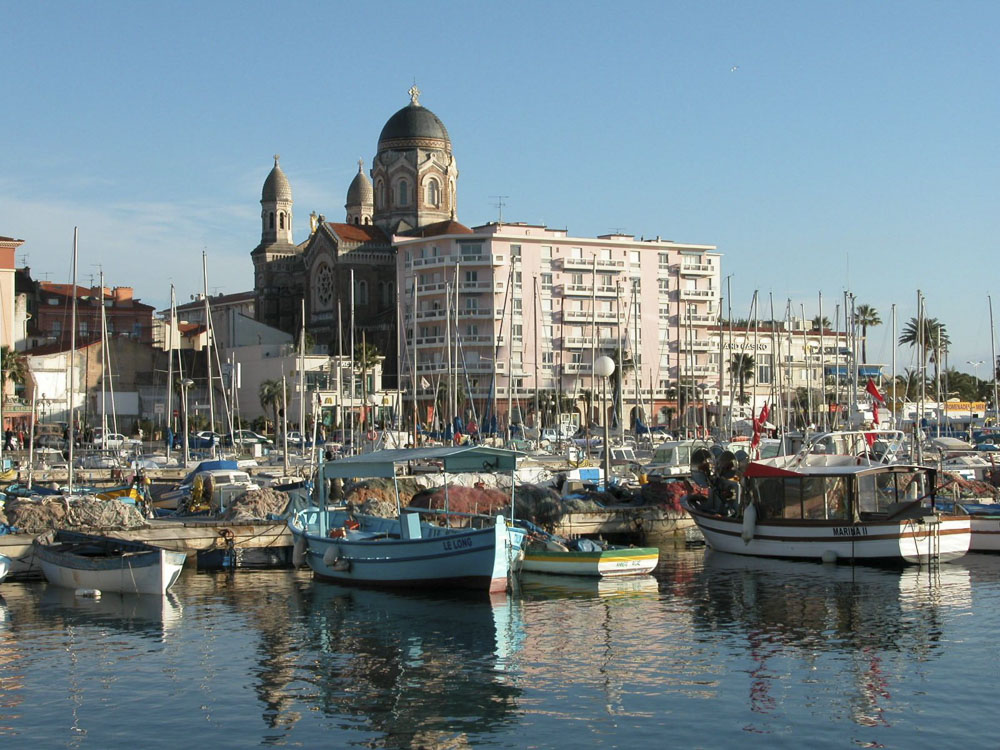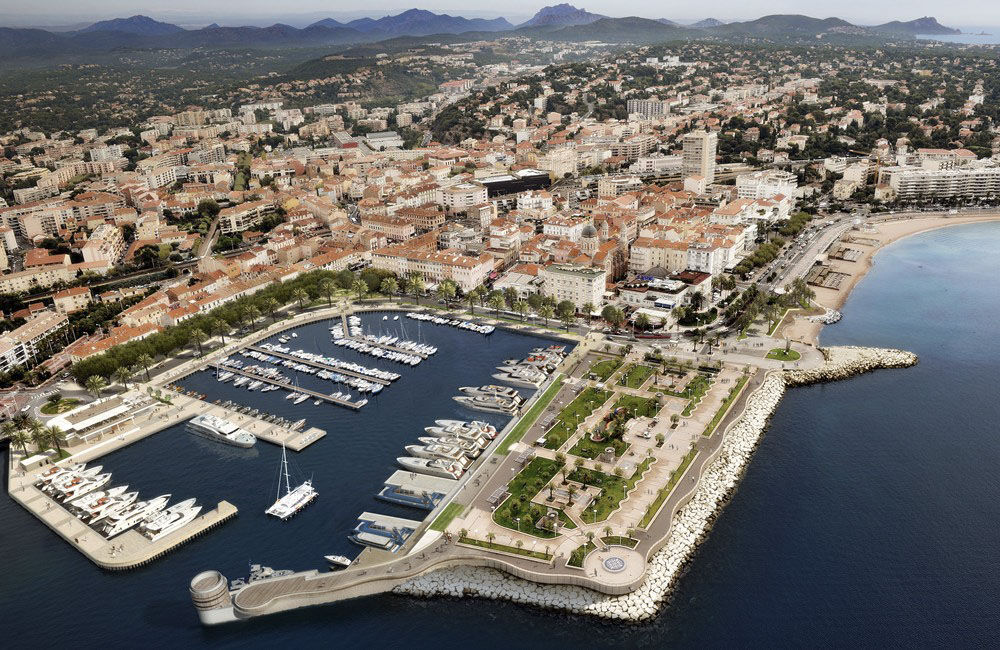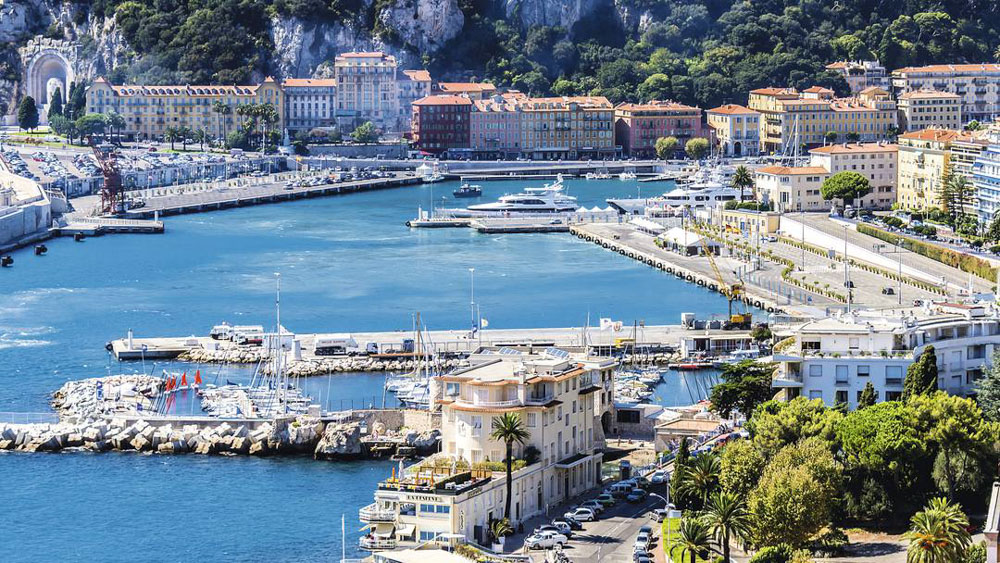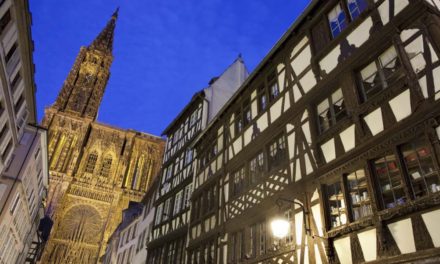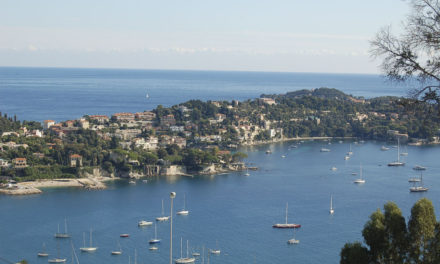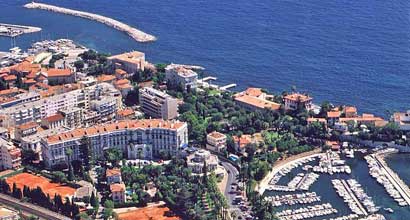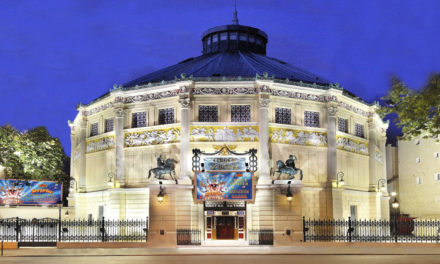Along the famous stretch of coastline known as the French Riviera lies Saint Raphael on the Côte d’Azur, in south eastern France. Tucked in between Frejus and its more famous neighbours, St. Tropez and Cannes, St. Raphael is in the department of Var, in the region of Provence-Alpes-Cote d’Azur (PACA). It is a lively seaside resort with well maintained beaches and a small harbour standing in the shadow of the forested hills of the Massif des Maures. It has a resident population of around 34,000 people which increases dramatically in the summer months as St. Raphael is a popular holiday destination with all types of accommodation and good transport links.
The full flavour of Provence is much in evidence throughout this region with spectacular views of the Mediterranean spanning 36 km of coastline. With 30 beaches to choose from offering aquatic sports of every description and a coastal footpath leading to the volcanic mountain range of the Esterel Massif, visitors to St. Raphael have an exceptional choice of leisure activities to explore. The climate is warm and inviting and the hospitality welcoming. A perfect place to enjoy the scenic wonders of the Riviera and to savour the Mediterranean way of life.
Book a Hotel in Saint Raphael
History
Remains of prehistoric dwellings have been discovered in several areas in the commune of St. Raphael. Because of the ancient rock structures of the Massif de l’Esterel, many archeological sites have been located and huge megaliths (monumental stones used for building) are still in situ from paleolithic and neolithic periods. Dolmens (tomb portals) and menhirs (long stones) are also evidence of early habitation, examples of which can be found at Valescure and at the entrance to the Parc de Veissieres.
The first record of the village is dated 1703 when it was known as Sanctus Raphael. The land surrounding what we now know as St. Raphael was settled during Roman times by wealthy families who built Gallo-Roman villas, an example of which can be found at the site of the Golf de l’Esterel club house. At Valescure (north of St. Raphael) many rich dynasties built large residences believing in the curative properties of the sun, sea and fertile terrain. Excavation of these villas has shown the remains of mosaics and thermal baths and, in one instance, a vivarium used to stock live fish.
The current town was founded in the 11th Century by monks from the Lérins Islands and in the 12th Century the Knights Templiers settled and built an important commanderie to protect pilgrims en route to Jerusalem during the Holy Crusades. From 15th to 19th Century, St. Raphael developed its fishing industry and part of the old town shows architectural examples of this significant building period.
The development of the town’s tourist industry was enhanced in 1799 when Napoleon Bonaparte landed on the beach of St. Raphael on his return from Egypt with local residents cheering him as ‘the conqueror of the pyramids’. However, his second visit came in 1814 when he passed through the town as a prisoner on his way to exile in Elba.
In more recent history, towards the end of World War II, allied troops landed at Dramont beach on 15 August 1944, beginning the landings of operation ‘Camel Green’.
Attractions
St. Raphael has a variety of beaches, some with fine sand, some with pebbles and there are stretches with rocky outcrops. Swimming is safe and the beaches are often supervised to promote safety and a ‘green’ environment. Snorkelling and diving are very popular pastimes and there is professional help available to discover the delights of the deep. The south side of Sea Lion Island has a profusion of young coral shoots which completely cover 40 metres of crevices and rocky surfaces, approached through a very beautiful natural archway. Beginner divers can practise at Dramont where there is a diversity of underwater life between the sand and rocks. For more experienced divers, The Christian Beacon marks one of the finest archaeological sites where, in medieval times, twelve ancient ships went down. There are also the remains of two Belgian barges to explore which were torpedoed in July 1944 and now lie in 28 metres of water.
All year round the three ports of St. Raphael (Vieux Port, Santa Lucia marina and Boulouris port) are alive with activities. From the harbour which has 230 berths, boats can be hired, yachts chartered and sailing instruction given. Other water sports to try are wind surfing, water-skiing and kayaking. Away from the sea, there are also facilities for hiring cycles to explore the hinterland as well as golf and tennis courts. The scenic route of the Corniche d’Or links St. Raphael to Cannes and was opened in 1903 by the Touring Club de France giving a panaramic view between the Var and the Alpes-Maritimes.
Places to see include the Notre Dame de la Victoire de Lepante Basilica, San Rafeu Church and the Museum of Prehistory and Underwater Archaeology. St. Raphael is also on the popular ‘garden route’ called the Route des Mimosas which includes remarkable gardens at Parc du Chateau de la Napoule, Jardin Germain l’Hardy-Denonain, Jardin de la Villa Fort de France and Jardin botanique de la villa Thuret within easy driving distance.
Famous writers and artists have lived in St. Raphael since the 19th century including Georges Sand, Victor Hugo, Alexandre Dumas, Guy de Maupassant and Frederic Mistral giving the town a cultural heritage which is well documented. There are several small art galleries showing local artists’ work and contemporary ceramics. Escorted tours throughout the old town from the medieval fishing village to the coastal resort are popular with visitors and experienced local guides will show you the Belle-Epoch villas along the way relating the history of this fascinating area.
The Casino Barriére de Saint Raphael in the Square de Grand opposite the Old Harbour is a place for a different kind of relaxation with 158 slot machines, 11 gaming tables playing roulette, black jack, poker and boule. The Casino offers entertainment all year round with cultural events and exhibitions. It has three bars, two restaurants and tea dancing sessions are held every afternoon.
A food market is held every day at Place Victor Hugo and Place de la Republique selling fresh fruit and vegetables. The fish market takes place in the old port and a Brocante market is held every Tuesday in Place Pierre Coullet.
Accommodation & Restaurants
Given the proximity of many delightful towns and villages along the Cote d’Azur, including fashionable Cannes and St. Tropez , there is a proliferation of hotels and luxury accommodation. However, St. Raphael has a good reputation for apartments in large modern complexes offering facilities for family accommodation as well as for the business minded. There are many top rated restaurants within the hotels and excellent restaurants along the sea front serving delicious local specialities. The old town has many cafes and bars which are colourful and good value. Excellent camping sites are located at Esterol, one of which is in a picturesque park and especially popular with children, featuring a heated, jungle-themed children’s pool and restaurant.
Travel
By road: coming from Nice, Paris, Lyon, Toulouse, Italy – A8 Motorway, exit 38 to Frejus/St. Raphael.
By rail: Saint Raphael/Fréjus is on the main rail line for services between Paris, Lyon, the Riviera and Italy including the TGV high speed train. It is also a “Train-Auto Accompagne” station for travelling with your car between the Riviera and Paris.
By Air: The nearest airports are Nice Cote-d’Azur International Airport, Toulon-Hyeres and Marseille-Marignane Airport.
Tourist Office
Office Municipal de Tourisme
Quai Albert 1er, BP 210
83 702 Saint-Raphael
Located just in front of the railway station.
Tel: 04 94 19 52
email: information@saint-raphael.com

